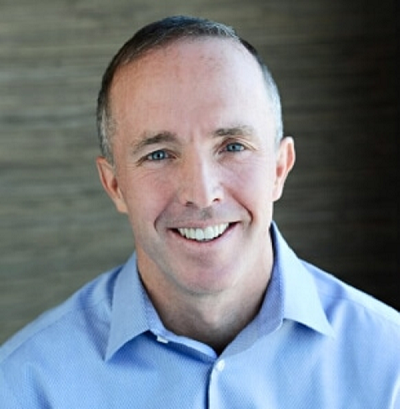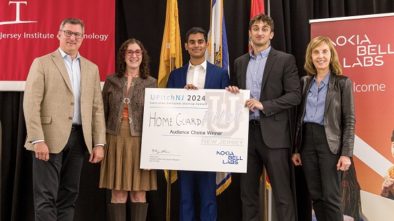Paramus-Based Nuvolo Manages the Connected Workplace — and It’s Growing Fast
Nuvolo is the fastest-growing workplace solutions company you’ve probably never heard of, and it is headquartered in Paramus.
In March, the company raised $32 million in a Series C round, which included $1 million from the world-famous Mayo Clinic.
Global venture capital and private equity firm Insight Partners (New York) led the round. Other investors included New Enterprise Associates (New York), Kaiser Permanente Ventures (Oakland, Calif.) and Revelation Partners (San Francisco).
Nuvolo said that it will use the Mayo Clinic’s investment to advance the company’s operational technology (OT) cybersecurity solution, which helps healthcare organizations and other OT-intensive industries address the growing challenges posed by the proliferation of cybersecurity threats from network-connected devices.
In other words, Nuvolo enables organizations to manage their workplaces on one platform, and secures the internet of things for businesses that increasingly rely on connected sensors and devices.
But that’s not all that it does. NJTechWeekly.com interviewed Tom Stanford, founder and CEO of Nuvolo this summer.
According to Stanford, Nuvolo is in a war against “crappy legacy technology.” Companies like Veeva Systems (Pleasanton, Calif.), Salesforce (San Francisco), Workday (Pleasanton) and ServiceNow (Santa Clara, Calif.) are driving cloud adoption in this area, he said. And this, he emphasized, is a catalyst for Nuvolo, “as more customers look to modernize, visually transform and consolidate all of the legacy technology that exists out there in the marketplace.”
Nuvolo’s solution is called “Connected Workplace,” and it is a Software-as-a-Service (SaaS)-based integrated workplace management system (IWMS). IWMSs are the focal point of every digital transformation initiative, he said.
The Marketplace
Stanford filled us in on the marketplace where Nuvolo sits. There are several market segments, he noted. One, dominated by Accruent (Austin), concerns simple-point-solution maintenance management technologies, largely in capital-intensive industries such as healthcare, life sciences and manufacturing. Many of the technologies used to take care of these assets are 15 to 20 years old.
Nuvolo is in a war against “crappy legacy technology.”Tom Stanford, Nuvolo
Another market segment is enterprise asset management, which is dominated by companies like Archibus (Boston) and IBM Maximo (Armonk, N.Y.); they do full-scale asset lifecycle management, not for IT assets, but for OT such as medical devices, lab equipment and manufacturing devices. “My own perspective on those technologies is they haven’t had an innovative thought in a decade. They’re there in those environments because they always have been.”
IWMSs, as defined by Gartner (Stamford, Conn.) and other firms, are becoming increasingly important post-COVID, now that the push for workplace safety and workplace experience is increasing, Stanford said. These systems include facilities management, space planning and management, real estate and lease management, capital project planning, sustainability and energy management. Nuvolo extends past traditional IWMSs to also incorporate workplace experience, project planning, OT security and more.
Nuvolo “provides all of those capabilities on a single platform, fully interconnected, built natively on the most modern capable cloud or SaaS platform in the world with ServiceNow,” said Stanford. “Our business is completely focused on the whole concept of the Connected Workplace. That means managing things like your physical workplace, space planning and your carbon footprint on one platform. And as for security, we’re not just focused on protecting desktops, laptops and communications services, but also on protecting CCTV [closed-circuit television] cameras, pipeline sensors; all of these assets that now have operating system software, MACs [media access control hardware] and IP [internet protocol], and are on the network. It’s the Wild West out there.”
Leading in Security for Connected Devices
With regard to OT security, Nuvolo is leading in this area, though very quietly, Stanford said. And he added, “We secure nearly a million OT devices today from a cybersecurity perspective — not IT, but OT: medical devices, facilities devices, laboratory devices. We are solving a problem that no one else is solving right now.
“The reason we are able to do this is that the Connected Workplace strategy allows Nuvolo to be the single authoritative source of inventory for all the operational technology,” he said. “We manage all OT from a service-management perspective. We manage the space that it fits in, the device that it sits in. We interact with parts utilization, how it’s performing during the whole OT service-management lifecycle, including the security of the device. This is all part of our Connected Workplace strategy.”
Raising Money During COVID
We asked Stanford about how COVID-19 has affected the company, especially its efforts to raise financing.
“We not only did a financing round, but it was an extraordinary financing round for Nuvolo,” he said. Stanford noted that they had done the entire $32 million raise virtually, although the executive team knew Insight Partners from before the pandemic. “Insight Partners is one of the most prestigious venture financing companies in the world,” he said. Nuvolo also had an “incredible valuation, and we experienced material growth in the business during COVID.” Nuvolo also hired nearly 80 people during 2020.
During the pandemic, “We acquired new customers and grew revenue, not at the rate we had planned in March of 2020, but we made adjustments to our plan. But the bottom line was we took the business off and to the right, and that was a big part of getting the financing.”
“People ask me, ‘Did you plan for a rainy day?’ I answer, ‘Yeah, I started planning for a rainy day seven-and-a-half years ago, when I started Nuvolo.’”Tom Stanford, Nuvolo
Nuvolo has always been a frugally run company, he said. It had previously raised about $30 million, which was about a quarter of what comparable companies had raised. Also, “We take good care of our customers and our teammates. We are a good company to do business with and we planned ahead,” he said.
“People ask me, ‘Did you plan for a rainy day?’ I answer, ‘Yeah, I started planning for a rainy day seven-and-a-half years ago, when I started Nuvolo.’”
Thinking Out of the Box about Hiring
The raise will also enable the company to employ even more crucial employees. “We are going from 300 people to the low to mid 500s by the end of the year. And 14 or 15 months post fundraising, we will double the head count of the company,” he said.
Stanford noted that there are about 60 employees who live and work in New Jersey and, “We expect that by next year there will be over 100.” The company started to flex back to the office around July 4, on a voluntary basis.
Getting STEM workers is a challenge for Nuvolo, Stanford noted, and that has led the company to do some out-of-the-box thinking about hiring. “We have a good working relationship with the New Jersey Institute of Technology,” and the company will be implementing its New Talent Program with NJIT and two other institutions in the United States “to get some time-zone variability.” Nuvola is also participating in the similar Freshers program in India and Sofia, Bulgaria.
“We want to be talking to the kids in their sophomore and junior years, starting to build and cultivate those relationships, and we’re not going to start hiring them in fives and sixes. We’re going to start hiring them in groups of 25 and 50. Here’s the value proposition, and we call it the “New Talent Program.” The idea is, get these kids when they’re 19 to 20. Get them assimilated into Nuvolo and get them to know us, and then we will make a huge commitment to onboarding and resourcing. We will then bring them into a structured six-to-nine-month assimilation program. We’ll teach them React, teach them ServiceNow, teach them JavaScript if they don’t have those basic skills already… and try to leverage it so [we have] 36 to 48 months of continuity with those resources.”
Stanford noted that this isn’t philanthropy on the company’s part. There just aren’t enough people trained in these areas for the company to hire. “We have to be in the business of training, enabling and building talent and capability. That’s going to be the secret to our success. We have to grow with some speed. You know we’re going to go to 600. Then we’re going to go right to 1,200 very, very quickly. You either grow or die in this space, and if we do this very well, we can grow quickly and maintain our culture,” Stanford said.




